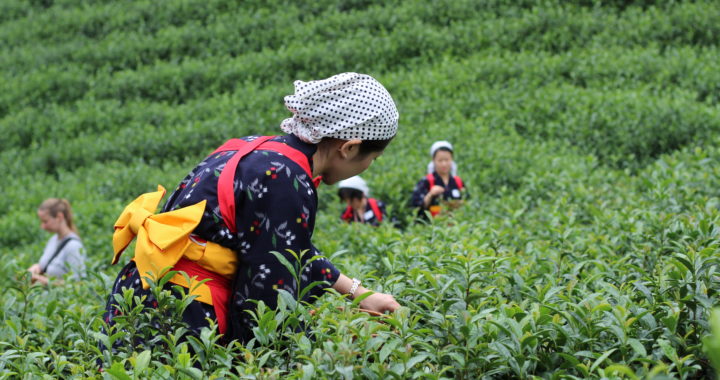Last week, we held our tri-annual tea picking and rolling event at Obubu to celebrate the beginning of the autumn harvest. The history of hand picking tea in Japan stretches back around 800 years to the Kamakura period, when tea seeds were first brought to the Kyoto prefecture from China. Traditionally, women would wear beautiful, colourful tea picking outfits, called Cha-musume (translated as “tea daughter”), and collect the leaves with care in reed baskets. In modern-day Japan nearly all tea is harvested by machine, and picking by hand is usually reserved only for very high-grade teas, such as the exquisite Gyokuro. For the last seven years, this event has kick-started each harvest season in spring, summer and autumn, and is a great occasion to keep this wonderful tradition alive and create a sense of community amongst tea farmers and tea drinkers.
We were joined by many of our Tea Club members, some old friends of Obubu and also some new faces, tea connoisseurs and newbies alike coming together for the ultimate tea experience! After an introduction into Japanese tea culture, history and harvesting from Matsu-San and Simona, we headed up to the beautiful Erihara tea fields armed with baskets, some dressed in Cha-musume, and filled with a thirst for picking as much tea as we could. After all, the more tea we pick, the more we get to slurp and take home at the end of the day!
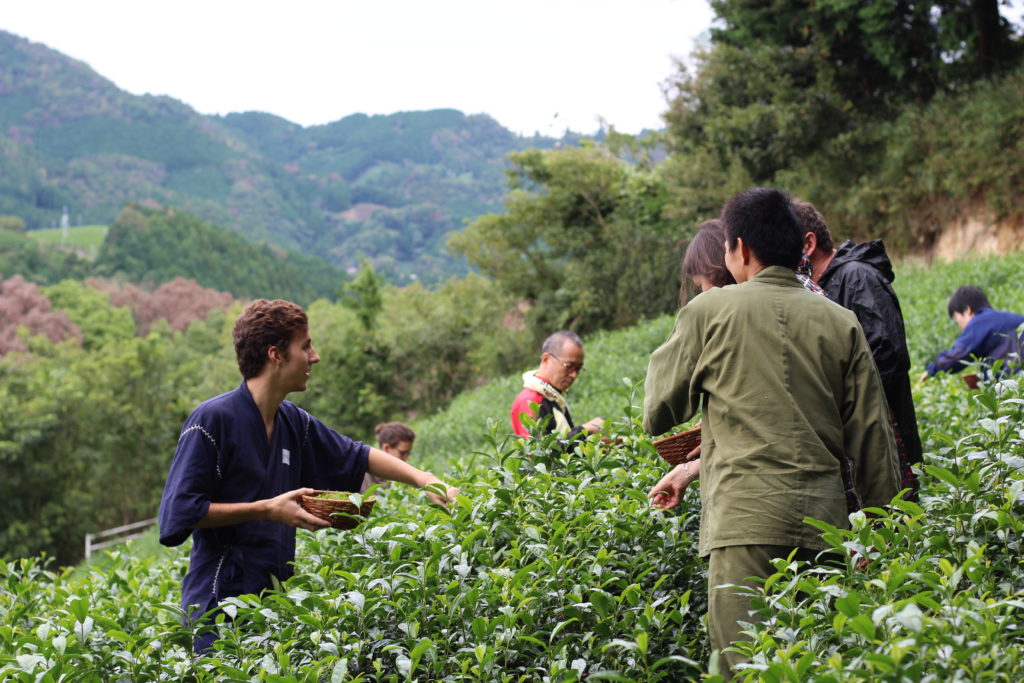
Matsu-San and Baptiste with guests in the Erihara tea fields
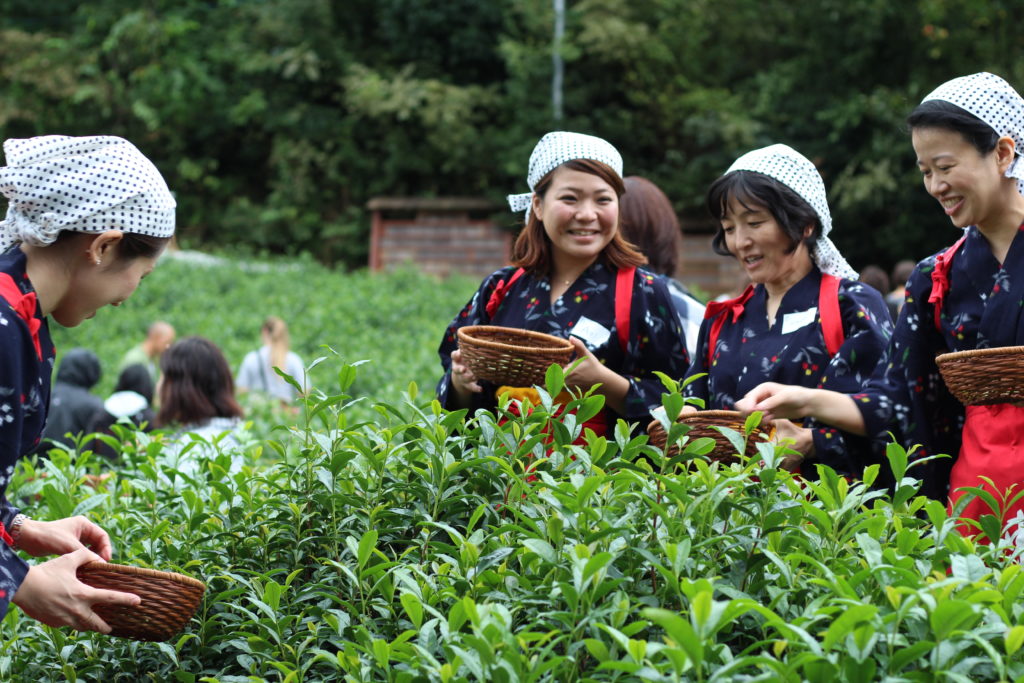
Picking tea dressed in the traditional Cha-musume
The steep slopes of the Erihara tea fields, located high up in the mountains surrounding Wazuka, offer stunning views of the endless fields filled with rows and rows of perfectly pruned tea bushes, like a patchwork quilt of emerald beehives strewn across the mountains. When picking by hand, the aim is to pick the top two leaves and the bud, as these are the most tender, newest leaves. This is what makes handpicked tea so delicate, desirable and unique in flavour.
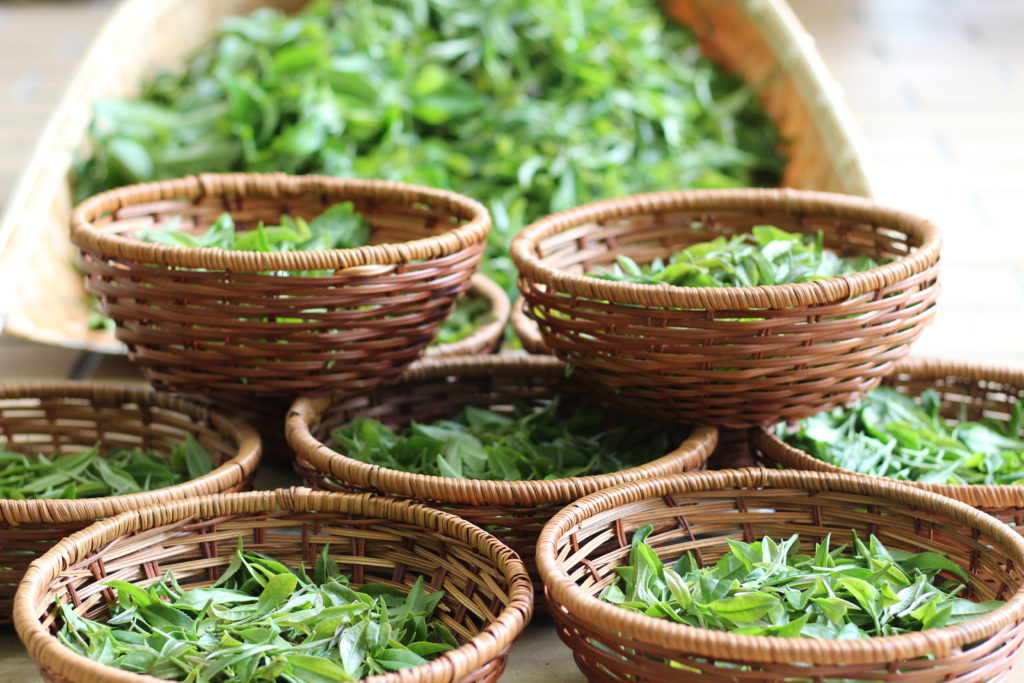
Freshly picked tea leaves left to wither in reed baskets
The tea was left to wither for an hour or so while we enjoyed a delicious lunch of bento and freshly made tea tempura – deep fried tealeaves. Our feast was prepared by a team of local women from Wazuka who call themselves the Koicha Group, and devote their time to preparing food and sweets made using Wazuka tea.
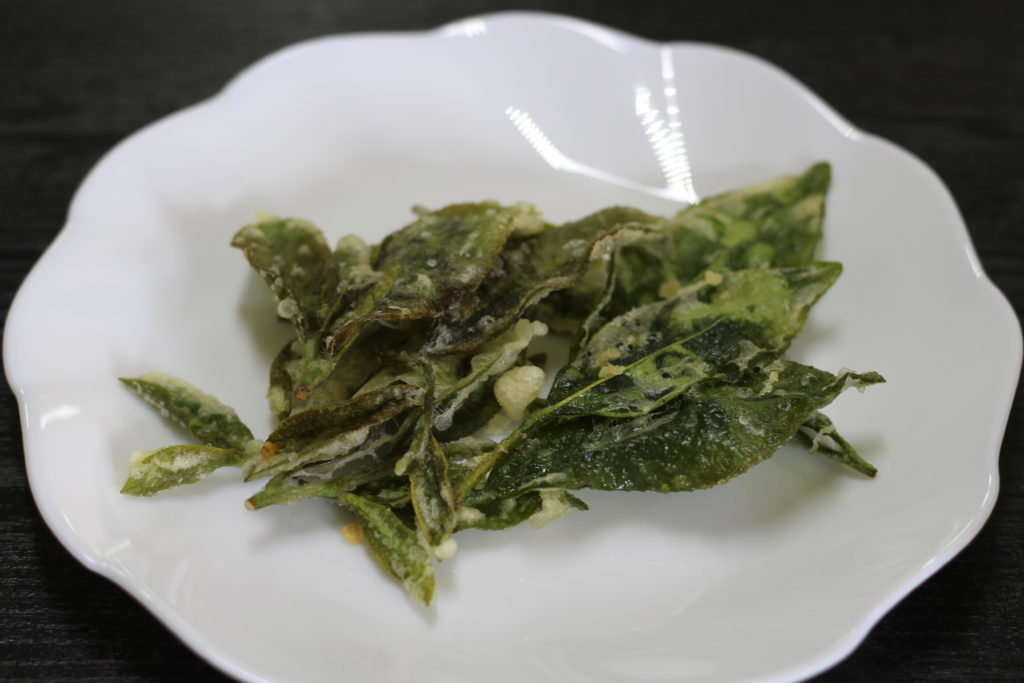
A side of tea tempura with lunch
In general, nearly all green tea made in Japan is steamed at the start of processing. This application of heat, known as ‘fixing’, is carried out to prevent oxidation occurring in the leaf, resulting in a tea that retains its vibrant green colour. Steaming is one of the processes that make Japanese tea unique from other green teas, contributing to its vegetal, spinachy, ‘umami’ taste. However, this day we chose to use the Chinese pan-frying method, turning the leaves evenly in large steel pans by hand.
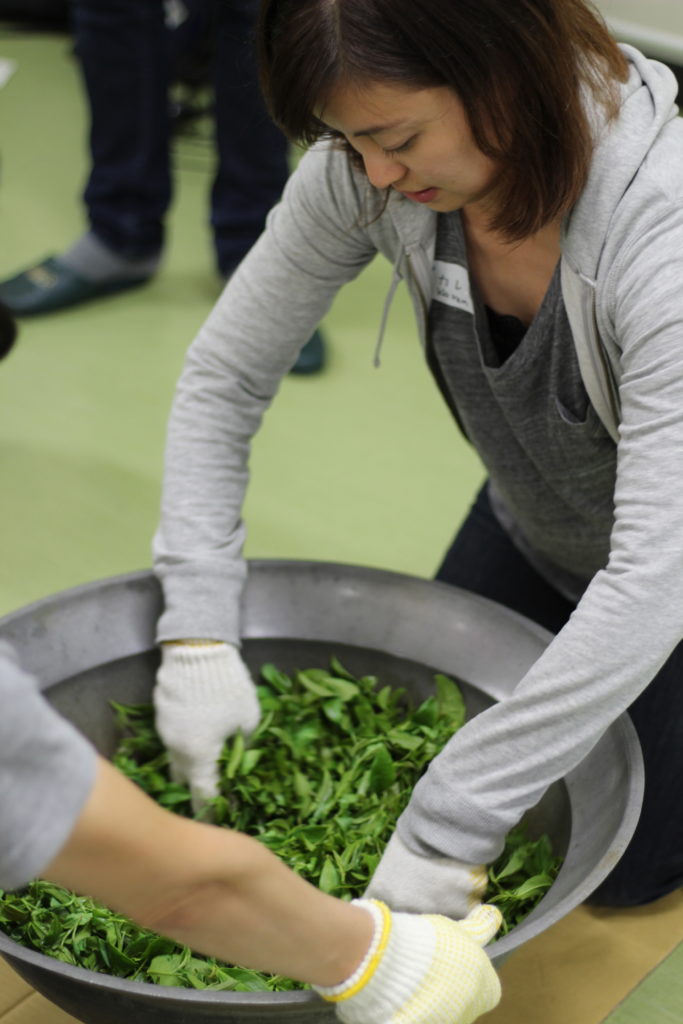
Fixing the leaves in steel pans
We then began the rough-rolling process. The idea here is to break down the cell walls of the leaf and thus extract the internal juices, so that when they are steeped the full flavour is released. We rolled them in large bamboo baskets called Takezaru. After a number of repeated cycles of rolling and pan-frying, the leaves were eventually formed into the beautiful needle shape that is characteristic of Japanese teas. With each step of rolling and drying, a little more moisture is lost from the leaves. Starting with around 85% moisture in the leaf, around 5% moisture is left at the end of processing. After 3 hours of constant handling, our 6kg of fresh leaves had transformed into 1.5kg of dried, ready-to-drink Sencha.
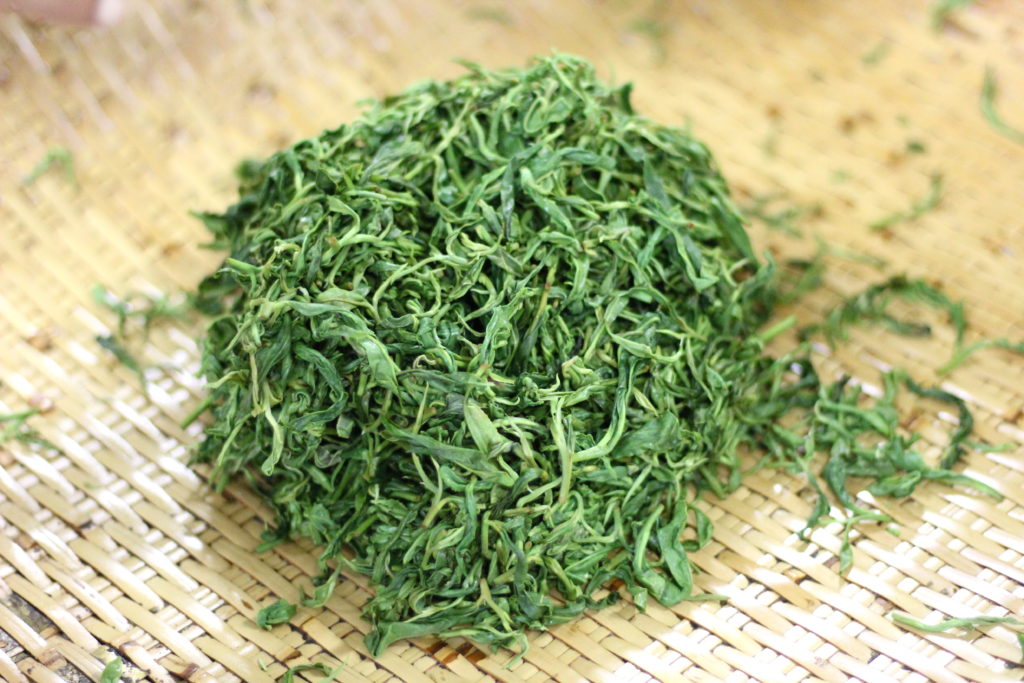
Tea leaves on the Takezaru
As well as hand rolling, we had the opportunity to roast our own Houjicha, filling the room with a lovely warm, toasty aroma as the leaves were shaken over a flame in a traditional Houroku. We also tried grinding Matcha using the traditional stone mill called the Ishiusu. This traditional method of grinding the Tencha leaves slowly and carefully by hand produces the best quality Matcha.
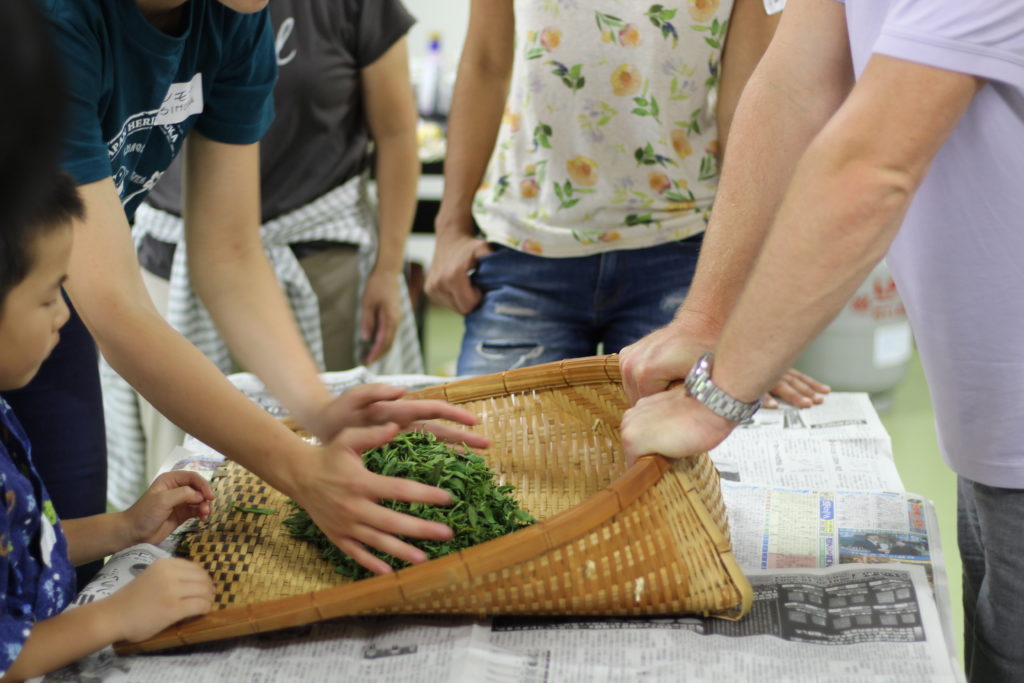
Taking turns to rough-roll the tea leaves
Then came the moment we had all been waiting for: tasting our own tea! All of our guests had a go at practising the best technique for brewing Sencha in the Houhin (a traditional Japanese ceramic teapot with no handle). We loved this opportunity to spend time with other tea lovers, share our knowledge and passion for tea, and experience a tradition that is very much a key part of Japanese culture.
Written by Fiona Kewley
Photographs taken by Fiona Kewley

